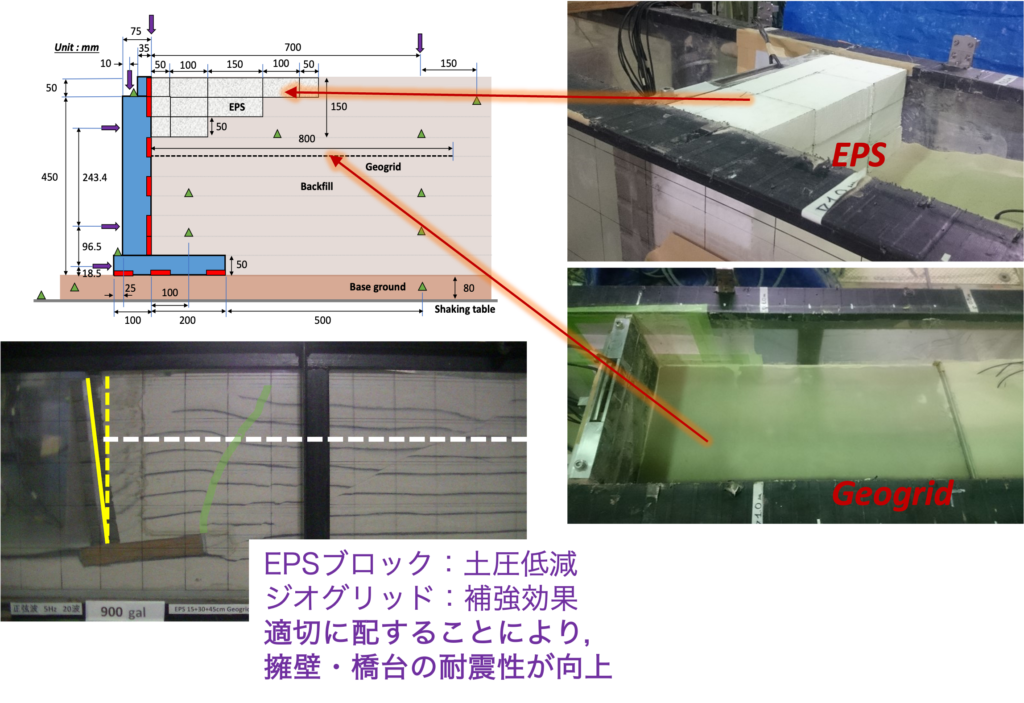Seismic resistance of retaining wall and bridge abutments reinforced by EPS and geogrid

Ground reinforcement methods such as geogrid reinforced soil retaining walls, which have been proven to have high seismic resistance, increase the resistance of retaining walls to seismic motion. On the other hand, a method to reduce seismic earth pressure on the back ground, which is the main cause of movement, is to use expanded polystyrene (EPS) blocks, which is one of the lightweight embankment methods.
In this study, in addition to the high seismic resistance of geogrid-reinforced soil retaining walls, we considered the possibility of smoothing the different seismic response characteristics of the retaining wall frame and its backfill soil by inserting EPS between them.1 In model vibration tests at a g-field, the seismic characteristics of retaining walls and bridge abutment models using both EPS blocks and geogrid were investigated systematically. The seismic properties of the models were systematically investigated.
H. Kyokawa, Y. Yamazaki, J. Koseki, T. Konami, T. Nishi, T. Kubota: Shaking table tests on bridge abutments reinforced by EPS and geogrid, Geosynthetics International, Vol. 29(2), pp. 163-173, April 2022.
京川 裕之, 川崎 広樹, 古関 潤一, 小浪 岳治, 西 剛整, 窪田 達郎: EPSブロックとジオグリッドを併用した橋台の耐震対策に関する振動台実験, ジオシンセティックス論文集, Vol. 34, pp. 161-168.


